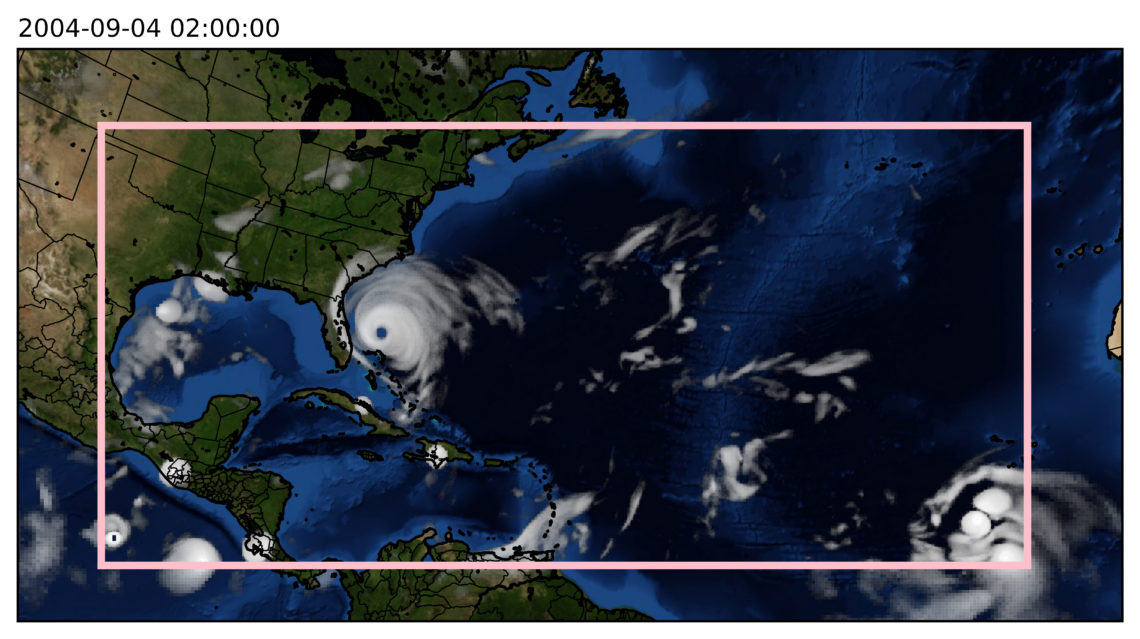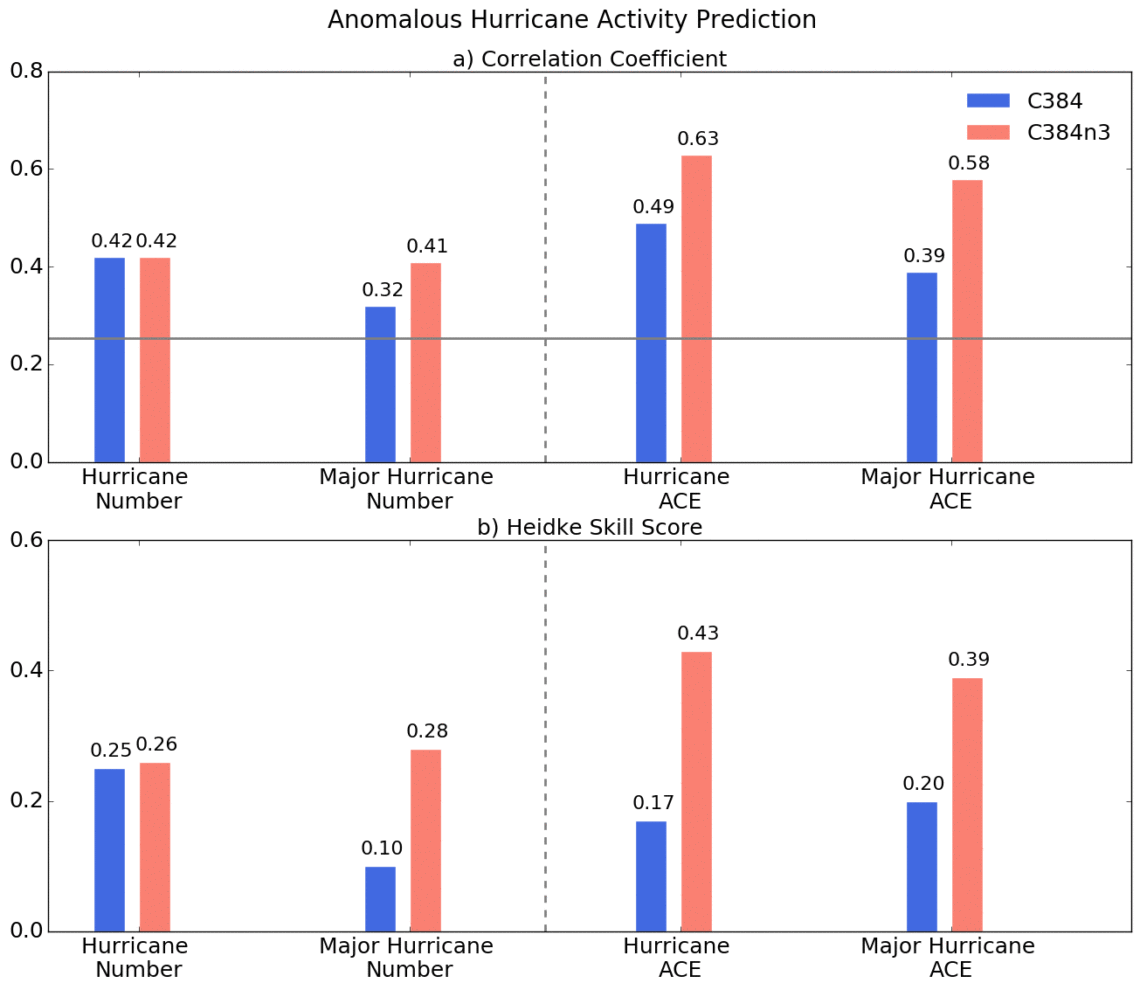August 27th, 2019
Key Findings
- Skillful prediction of anomalous monthly hurricane and major hurricane activity is demonstrated in a dynamical model for the first time.
- The two-way nesting capacity in GFDL’s FV3 dynamical core allows for better representation of intense hurricanes and hence better prediction of major hurricane frequency and accumulated cyclone energy.
Kun Gao, Jan-Huey Chen, Lucas Harris, Yiongqiang Sun, Shian-Jiann Lin. Geophysical Research Letters. DOI: 10.1029/2019GL083526
Existing hurricane prediction systems fall into two categories: hurricane track and intensity predictions on a weekly timescale; and the prediction of hurricane activity on a seasonal timescale. Substantial progress has been made in improving the predictions on the two distinct timescales in the past decade. However, the prediction of hurricane activity on a subseasonal timescale (from two weeks to two months) has not shown much advancement. Credible subseasonal hurricane predictions can have significant socioeconomic impacts, but are challenging. There is much uncertainty in the sources of predictability; furthermore, the realistic simulation of hurricanes requires high horizontal resolution (at least finer than 10 km), which is expensive when using global prediction systems.
In this study, the authors investigated the prediction of monthly (30-day) North Atlantic hurricane activity based on the GFDL High-Resolution Atmospheric Model (HiRAM), which is powered by the Finite-Volume Cubed-Sphere (FV3) dynamical core. The two-way nesting capacity in FV3 allows for refining horizontal resolution over a selected region in the global domain.
The performances of two grid configurations were compared: one, a globally-uniform 25-km grid, and the other with an 8-km interactive nest over the tropical North Atlantic. While both grid configurations show skill in predicting anomalous monthly hurricane frequency and accumulated cyclone energy (ACE), the 8-km nested grid shows much improved skill in predicting major hurricane frequency and ACE.
This study provided the first attempt to predict hurricane, and especially major hurricane, activity over a month using a dynamical model. This study highlights the performance of the two-way-nesting approach, which is a computationally affordable way to permit better simulation of intense hurricanes and shows the potential for operational prediction of hurricane risk on subseasonal timescales.




